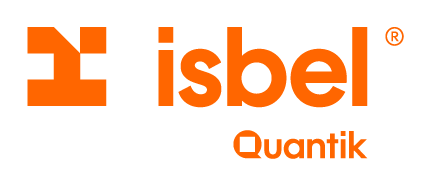The private networks applied to these technologies ensure connectivity during relocations, enable the collection of massive amounts of data to optimize decisions, and also provide real-time information from operations centers to remote locations to improve farm surveillance, crop health monitoring, livestock health monitoring and tracking, and labor training.
An experiment with self-driving tractors
Tractors are synonymous with plowing farmland and, since their inception, have been driven by people. Take the human out of the driver's seat and an autonomous tractor could tirelessly plow the same land. Add in some artificial intelligence (AI) and location tracking to help determine its path, and it could be even easier to achieve the efficiency sought.
That's what researchers at Harper Adams University thought as they ran an experimental farm called Hands Free Hectare in the British town of Edgmond in 2016. It all started with one hectare where they ran a 25-year-old tractor and combine harvester converted into autonomous vehicles equipped with cameras, lasers and GPS systems.
Strict regulations prevent them from stepping on the land. So, while the two vehicles prepared the soil, planted the seeds and maintained the crops, those running the project used drones to collect soil and crop samples. They even monitored for weeds and pests.
Since then, new funding expanded the farm to 35 hectares and three self-driving tractors in 2019. Except, instead of a "perfect hectare," the project sought to challenge the AI-powered machines with more "real-world conditions," which included obstacles and uneven roads. The original hectare harvested two seasons of grain without any manual labor, marking the first time such a thing has happened in the world. The current expansion should pay off with other crops as well.

The contribution of private networks for smart fields
To be effective, smart farming robots and vehicles require ultra-low latency to determine, for example, which plants are weeds and act quickly. This is where private networks, combined with 5G, will make a difference.
Private wireless connectivity ensures that remote farms stay connected when wifi network coverage is insufficient and enables the deployment of smart farming applications for real-time data analysis. In addition, using a private network makes it easier to move machinery around, as it is not limited to a coverage area (like wifi).
With reliable high capacity for machine-to-field communication and low latency for machine-to-machine connection, smart fields can benefit from applications such as field robots, automated drone flights, automated driving, vehicle fleet tracking, etc.
Among some of the most prominent functionalities, massive amounts of data can be collected from fields, barns, greenhouses, and other agricultural facilities through remote inspection. A wealth of information can also be delivered from operations centers to remote locations to improve farm surveillance, crop health monitoring, livestock health monitoring and tracking, and labor dispatching and training.
Likewise, combining GPS, sensors and imagery can improve decisions related to how to deploy robotic vehicles that till the land. Meanwhile, as more machines and processes are automated, a centralized solution in an operations center can operate multiple machines in the field, making suggestions and relaying additional information.
Is it feasible to extend this model to more establishments?
In general, agriculture experts agree that making this a reality on a large scale will require the commitment of several players. For starters, the world's largest farm equipment manufacturers would not only have to embrace the development of autonomous machines, but also the AI technology that smaller development companies are working on to make them smarter.
For its part, John Deere unveiled a prototype self-driving tractor and autonomous sprayer in October 2019, which offered a glimpse into how the machines can handle more aspects of heavy-duty crop harvesting.
Blue River Technology, acquired by John Deere in 2017, created See and Spray, a device that uses cameras, machine learning and AI to detect weeds in its fields. The machine has the ability to spray pesticides, fertilizers and fungicides. This technology can help farmers reduce the amount of weeds among their crops by up to 90% in a few years.



